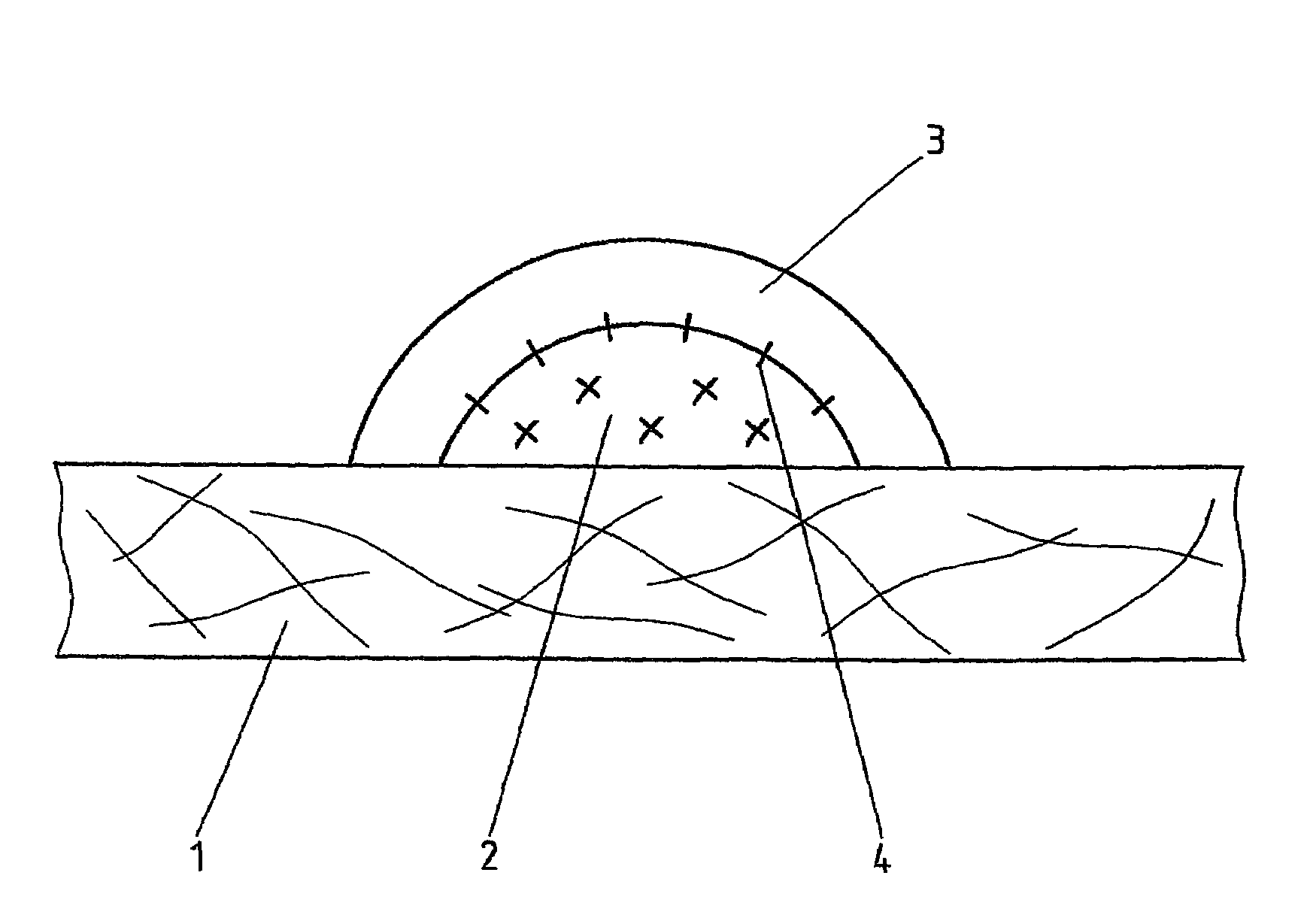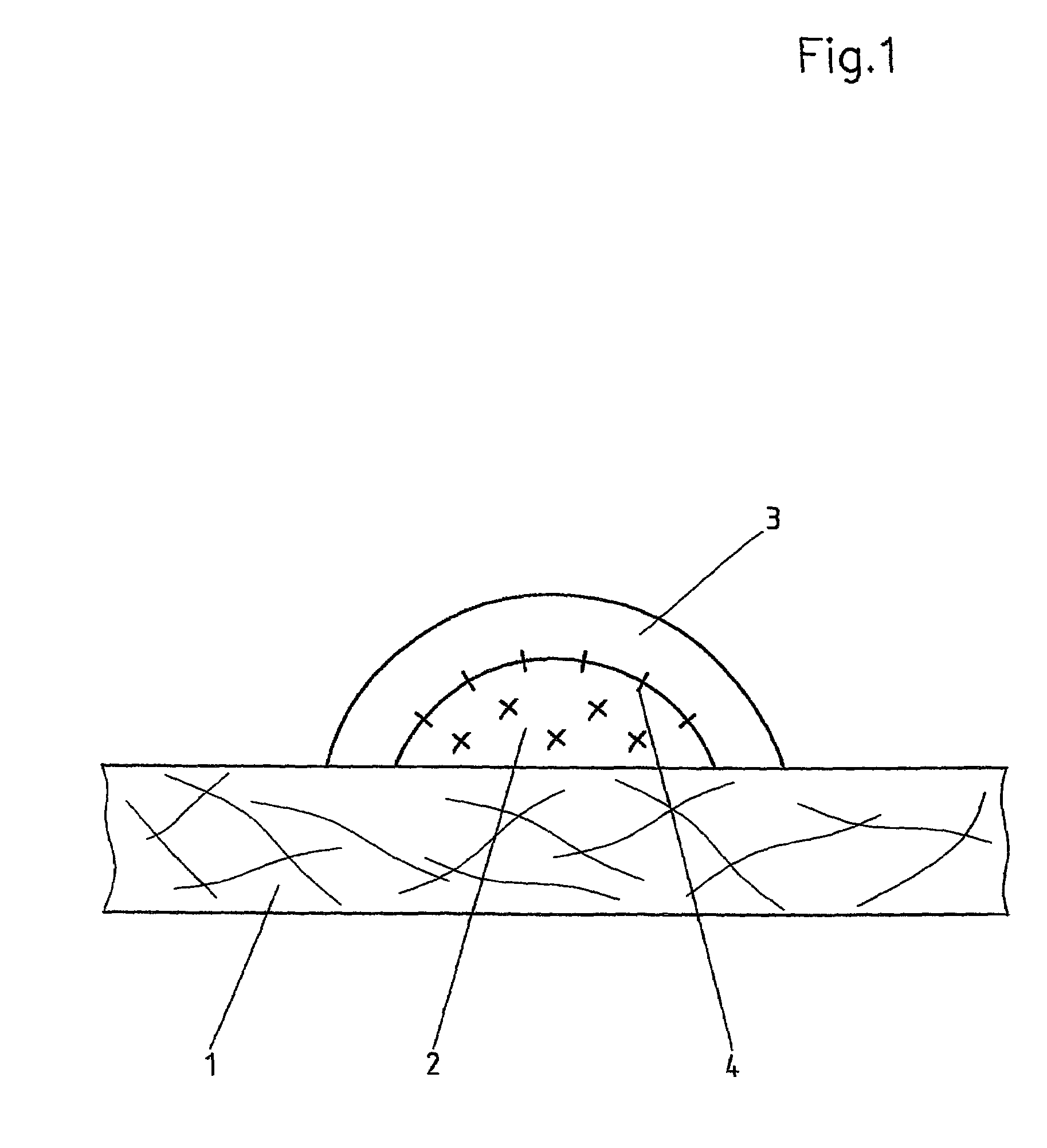Fusible interlining
a technology of interlining and interlining, which is applied in the field of interlining, can solve the problems of reducing the adhesion and separation force of the adhesive composition, and affecting the adhesion and separation force of the composition, so as to achieve the effect of reducing the back-riveting force and reducing the friction for
- Summary
- Abstract
- Description
- Claims
- Application Information
AI Technical Summary
Benefits of technology
Problems solved by technology
Method used
Image
Examples
example 1
[0032]In a stirred vessel, a mixture of polyacrylate binder dispersion and epoxide having particle sizes 2 using a CP52 stencil. A polyamide of the grain fraction 80–200 μm is sprinkled over the still wet paste dot (2) as an upper dot (3) with a coated mass of 7 g / m2, the excess is removed by suction, and subsequently the polyamide is dried and sintered on in a Mathis oven for 30 s at 180° C. The resulting total coated mass is 12 g / m2.
[0033]The nonwoven fabric interlining produced in this manner was fixed to batiste.
[0034]The laminate of shell fabric and an interlining produced according to the present invention exhibits a softer feel than comparable shell fabric-interlining laminates.
[0035]
Fixing temperaturePrimary adhesionBack-riveting120° C.8.0 N / 5 cm0.2 N / 10 cm140° C.9.0 N / 5 cm0.2 N / 10 cm
The nonwoven fabric interlinings were torn during separation force testing.
example 2
[0036]In a stirred vessel, a mixture of polyacrylate binder dispersion and a dispersion of an acrylate-glycidyl acrylate copolymer having particle sizes 2 using a CP52 stencil. A polyamide of the grain fraction 80–200 μm is sprinkled over the still wet paste dot (2) as an upper dot (3) with a coated mass of 8 g / m2, the excess is removed by suction, and subsequently the polyamide is dried and sintered on in a Mathis oven for 30 s at 180° C. The resulting total coated mass is 14 g / m2. The nonwoven fabric interlining produced in this manner was fixed to batiste.
[0037]The laminate of shell fabric and an interlining produced according to the present invention exhibits a softer feel than a comparable shell fabric-interlining laminate.
[0038]
Fixing temperaturePrimary adhesionBack-riveting120° C. 10 N / 5 cm0 N / 10 cm140° C.11.5 N / 5 cm0 N / 10 cm
The nonwoven fabric interlinings were torn during separation force testing.
PUM
| Property | Measurement | Unit |
|---|---|---|
| diameter | aaaaa | aaaaa |
| temperatures | aaaaa | aaaaa |
| molar masses | aaaaa | aaaaa |
Abstract
Description
Claims
Application Information
 Login to View More
Login to View More - R&D
- Intellectual Property
- Life Sciences
- Materials
- Tech Scout
- Unparalleled Data Quality
- Higher Quality Content
- 60% Fewer Hallucinations
Browse by: Latest US Patents, China's latest patents, Technical Efficacy Thesaurus, Application Domain, Technology Topic, Popular Technical Reports.
© 2025 PatSnap. All rights reserved.Legal|Privacy policy|Modern Slavery Act Transparency Statement|Sitemap|About US| Contact US: help@patsnap.com


